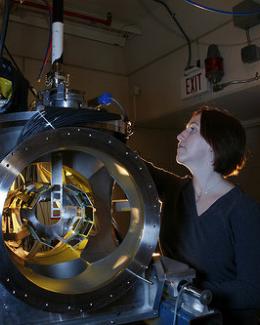Abstract
Background: 31Cl is a neutron-deficient isotope with a half-life of T1/2=190(1) ms. The nuclear structure of its daughter, 31S, is important for the determination of the thermonuclear 30P(p,γ)31S reaction rate, which affects the final isotopic abundances of the ejecta from classical oxygen-neon novae.
Purpose: We aim to determine the β feedings, γ-decay branchings, and excitation energies of states populated in 31S and create a comprehensive decay scheme for comparison with predictions based on the shell model.
Methods: Using a 31Cl rare istope beam implanted into a plastic scintillator and an array of high-purity Ge detectors, γ rays from the 31Cl(βγ)31S decay sequence were measured. Shell-model calculations using the USDB and the recently-developed USDE interactions were performed for comparison.
Results: A 31Cl β-decay scheme was constructed from the experimental data and compared to the USDB and USDE shell-model calculations based on the β feeding and γ-decay branches of each observed state. 33 new γ-ray transitions and ten new β decay branches were observed. The β feeding and γ-decay branches of each observed state were compared to those from the USDB and USDE shell-model calculations. For every allowed transition predicted by the USD calculations up to an excitation energy of 6.4 MeV in 31S, an analogous transition was found in the experimental data, enabling a one-to-one comparison with the shell model. Using these identifications, spin and parity arguments were made for observed states.
Conclusions: The new 31Cl γ-decay scheme presented in this work is the most complete and precise one for this nucleus constructed to date, incorporating statistics over an order of magnitude higher than previous work on 31Cl β-delayed γ decay. Of particular interest is the discovery of a 6390-keV state that mixes with the isobaric analog state and affects the 30P(p,γ)31S reaction rate. Other states observed in the decay are not expected to strongly affect the 30P(p,γ)31S reaction rate, but the comprehensive comparison to the shell model helps to clarify spin and parity assignments of resonances that might affect the rate.



